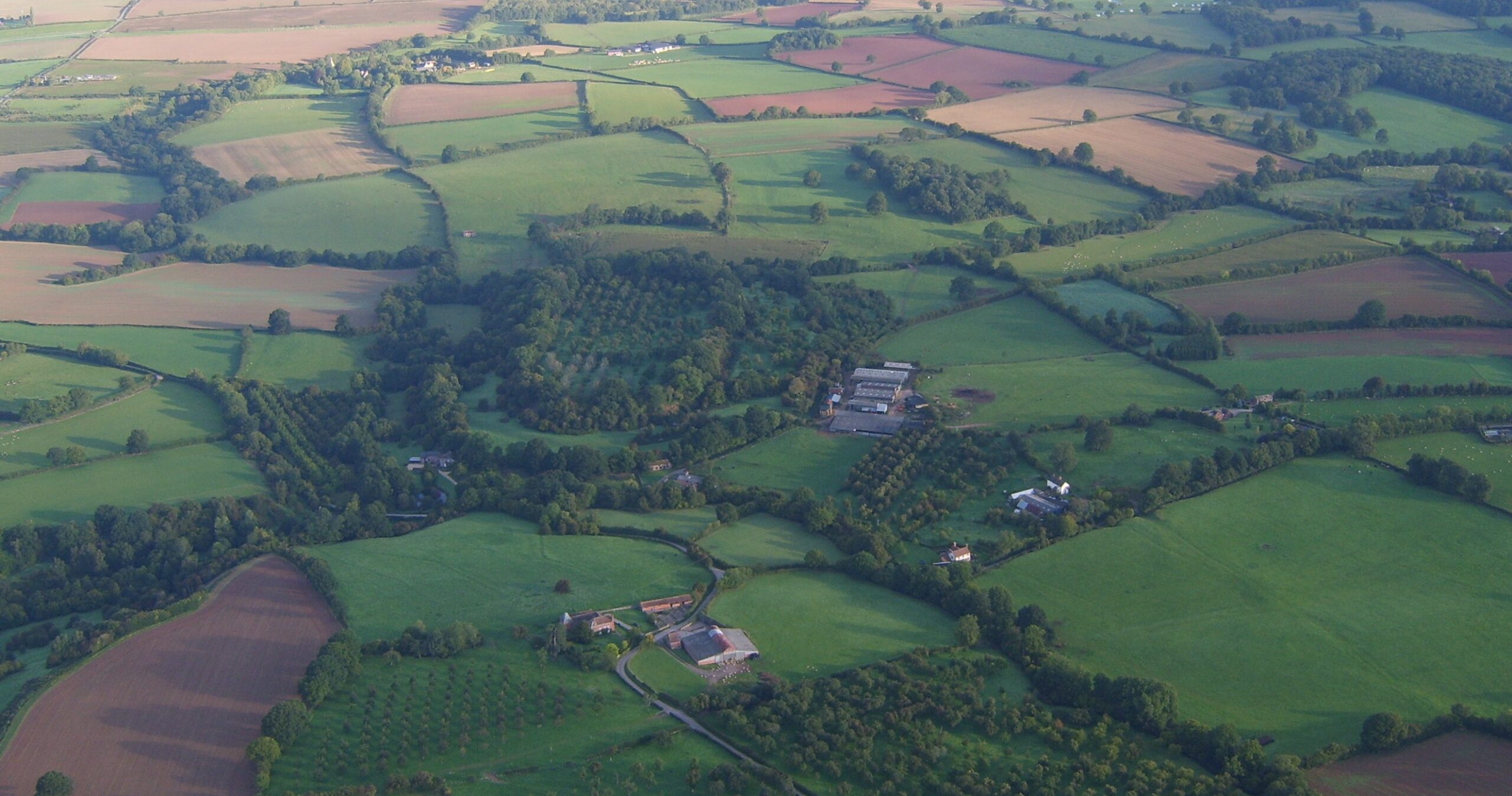Humber Woodland of Remembrance sits in an ancient landscape, being a little over half a mile, north-west of the iron-age hill fort, Risbury Camp. This is one of the best-preserved hill-forts and is further notable because it is a lowland camp.
It is certainly a beautiful place with a wonderful peaceful atmosphere and is regularly grazed by our pedigree Hereford cattle and, in spring by our flock of ewes and lambs. Primroses and bluebells grow there in spring, and in autumn, cider-fruit is gathered from the one hundred year old cider orchard in the centre of the camp. At Christmas, we can pick mistletoe, holly and old man’s beard.
Humber was also known to the Romans, whose road passes along the western boundary of Humber Woodland of Remembrance. There is a significant Roman site just to the north, at Blackwardine, where the Victorians found pottery, whilst building the railway (now gone, thanks to Dr Beeching – more history!)
Alfred Watkins, author of ‘The Old Straight Track’, was at Blackwardine when he was struck with his ideas about Ley Lines in 1921.
Humber, Risbury and Stoke Prior are all mentioned in the Doomesday Book, all were of the Leominster Manor. They remained under the jurisdiction of Leominster District Council until recent re-organisation in local government. All three remain part of the Leominster Team Ministry, centred around Leominster Priory Church.
St Mary’s Church, Humber
A little to the east of Humber Woodland of Remembrance is St Mary’s Church, which dates back to Norman times and contains a beautiful but simple twelfth century Font. It sits in its own hamlet, tucked away on a mound, with only the shingle spire visible from the Roman road. St Mary’s Church is available for funeral services if required.
The footpath, which passes through the Woodland of Remembrance on its way to the village of Risbury, is evidence of constant use by local people going about their daily business over centuries.
Those of us, who live here, consider ourselves fortunate to live in such a beautiful and inspiring place, where there seems to have been a fairly peaceful existence for more than two thousand years. We believe it to be the perfect resting place.

